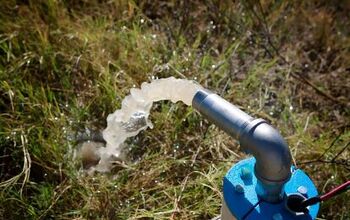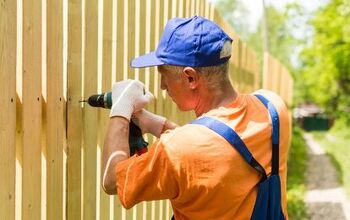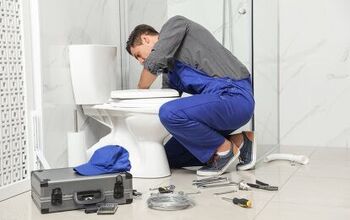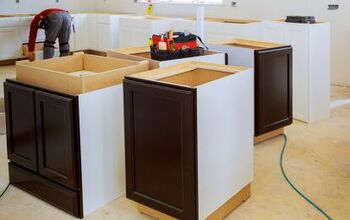How Long Does It Take For A Water Well To Refill? (Find Out Now!)

We all seem to take clean water for granted. You turn on the tap and freshwater flows. If you live in a rural area and depend on a water well, you may have experienced a temporary lack of water when your well goes dry from overuse. You may wonder how long does it take for a water well to refill?
It can take as long as 3 months for a water well to refill completely after dry conditions. Otherwise, a water well can recover water at a rate of 5 gallons per minute. Wells experience a gradual decline in their recovery rate over time and can sometimes only recover a fraction of a gallon per minute.
Domestic water wells are things that many homeowners forget about until something goes wrong and the water doesn’t flow. Understanding how your well works is important to knowing how to maintain your water well. Part of that knowledge is recognizing how your well works and when something is not working correctly.
Do You Need Well Pump Repair or Service?
Get free, zero-commitment quotes from pro contractors near you.

Do Water Wells Refill Themselves?
Water wells do refill themselves over time, but the rate can vary. There are several factors that determine how long it takes for a water well to refill, and that includes:
- The type of well
- Parts
- Age of the well
- Climate/temperature
Well recovery rates vary widely and determine how quickly your water well will refill. Extreme conditions, such as droughts, can make it take months for a well to refill. Follow along as we explore each of the factors that determine a well’s recovery rate.
Anatomy of a Domestic Water Well
Your water well is not just a hole in the ground with a pump at the bottom. A properly drilled and finished water well is a sophisticated piece of engineering. You should be able to communicate with your well driller and understand the anatomy of your water well. Let’s discuss some of the parts and terms associated with a domestic water well.
The Well
Your well driller starts by drilling the hole that will eventually become your water well. Most drillers use a rotary drilling rig. A rotary rig turns a length of pipe with a cutting bit on the working end. As the well gets deeper, the driller adds more pipe to the drill shaft. The bit cuts down until a suitable source of water is reached.
Water well bores for residential water wells are typically four to six inches in diameter. Six inches is the preferred size to provide enough water for most domestic residential users.
The Casing
The well driller will install a pipe casing into the well. The casing slips into the well bore and prevents the bore from caving in and ruining the well. The casing usually sticks about 12 inches above ground level and runs the entire depth of the well.
Well casings can be either plastic or metal pipe. The well’s size, the type of soil that the will passes through, and local regulations dictate which type of well casing the driller will install.
The Well Screen
The bottom portion of the well casing is a well screen. In most instances, this is the same material as the rest of the well casing but has holes or slots cut into the casing pipe. These holes or slots allow water to fill the casing but keep out sediment and silt. Keeping silt and sand out of the well casing is important for your well to have a long life with few problems.
Well Cap
The top of the well casing that extends above ground has a cap to prevent contamination of your well water but allows access to the well and the parts of the well below ground. It is vital to your health and safety that the well cap remains in place to ensure clean and uncontaminated water.
A Pitless Adapter
Your well driller may or may not install a pitless adapter. The decision to install a pitless adapter is often a matter of where you live. In areas that suffer from prolonged winters with long cold spells should have a pitless adapter installed. The pitless adapter allows the well plumbing to be installed below the frost line to prevent your water pipes from freezing.
A pitless adapter is not as well known or employed in areas of the country with mild winters.
A Submersible Pump
Most residential domestic water wells include a submersible pump to supply water under pressure to your home. The pump fits inside the well casing and sits near the bottom of the well. The submersible pump is connected to your home by the water supply pipes and an electrical supply cable.
Pressure Tank
The pressure tank is not a component of your water well. However, it is an important piece of the puzzle. The pressure tank connected to your water well holds a small supply of water under pressure. The stored supply allows instant water to use in your home. Without the water pressure tank, there would be a noticeable lag between the time you turn on a water tap, and the water starts to flow fully.
The Geology of Water
Most domestic water wells drill into an underground aquifer. An aquifer is a stratum of the underground geology saturated with water. Typically, this stratum is a thick layer of sand and gravel.
The key to a productive domestic water well is finding the aquifer and drilling through the water-bearing stratum and into the rock or shale formation that forms the aquifer’s bottom. This technique allows the well to draw water from the entire depth of the aquifer.
The Problems with Well Refill
The real issue with many domestic water wells is the refill or recharge rate. The stratum of the well may have plenty of water and good depth. However, the nature of the water-bearing materials doesn’t allow the water to flow into the well casing fast enough to supply the house’s demand.
When the stratum flow is insufficient to serve the house, the pump pulls the water level down to the bottom of the casing and the well seems to go dry temporarily. Pumping the well down is not only inconvenient, but it is hard on the pump.
Good Water Flow but Still No Supply
Over time, even the best water well may start to provide insufficient water. There are several reasons this may happen. Many of these problems can be remedied by rehabbing the water well. Some are related to overuse or over-commitment.
Older Wells and Reduced Supply
Many times, well owners will notice a gradual decline in the recharge rate of their well. As wells age, they suffer from sediment and silt build-up, corrosion, or collapse. Age-related problems can severely limit the well’s recharge rate and make it necessary to rehab the well.
Silt or sand build-up is often the chief problem. No well screen is fine enough to stop all the sand or sediment from entering the well. As the sand enters the well casing, it settles to the bottom of the casing. Over time, the build-up of sand limits the amount of water available in the casing. It may even overwhelm the pump.
Over Drilling
Many rural areas see a population boom, and more and more people move out of the urban population areas. Where once houses were scattered, we now see residential developments springing up, each house with its own well. The density of wells into the aquifer can result in over-pumping of the aquifer
Over-pumping lowers the water’s overall depth in the aquifer over time, causing less water to be available to each well. Shortages and supply problems result, and everyone suffers. Many areas of the country have established water districts that control water well drilling to ensure that the water supply is sufficient to supply all the users.
Climate and Weather
Most aquifers depend chiefly on rainfall to recharge the underground water table. During periods of prolonged drought, water table levels can drop significantly. In these cases, it may be necessary for homes dependent on a water well to make plans for alternate water supplies.
This phenomenon has been seen often in recent years in the southwest regions of the country. Widespread repeated droughts have plagued many areas and have left thousands of homes without a reliable water supply.
Do You Need Well Pump Repair or Service?
Get free, zero-commitment quotes from pro contractors near you.

Water – Taken for Granted Until Its Not There
Unfortunately, most of us don’t think about water. We take it for granted that we will have clean, fresh water at the turn of a tap. The importance of that water supply only becomes an issue when the water doesn’t flow when the tap turns.
We hope that this article’s information gives you a better understanding of how your domestic water system works. If you are having recharge or supply issues with your domestic water well, we encourage you to talk to a water well specialist about your problems. There may be solutions that can keep the water flowing in your home.
Related Guides

Dennis is a retired firefighter with an extensive background in construction, home improvement, and remodeling. He worked in the trades part-time while serving as an active firefighter. On his retirement, he started a remodeling and home repair business, which he ran for several years.
More by Dennis Howard



























